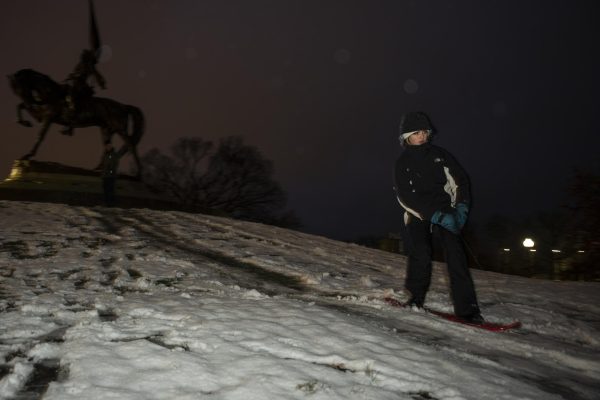Chicago gets geocoded, use of location-based data on the rise
June 3, 2010
Though seemingly insignificant at the time the picture was taken, Eric Fischer finds the timestamp and location information attached to a photograph of your family enjoying a picnic at the beach incredibly useful.
This past year, Fischer, 37, who works as a software engineer for Google, compiled data from thousands of pictures from the popular image hosting platform, Flickr, to create a series of maps he calls “The Geotaggers’ World Atlas.” He chose to use the data associated with the geotagged pictures from Chicago and 49 other cities in the world with the largest clusters of photographs taken. The map consists of black, green and red lines representing different modes of transportation. A concentration of colored lines simply means that a lot of pictures were taken in those areas in the city.
The real reason for pursuing this project, however, has to do with the power of location-based data. Its use is becoming increasingly more prevalent as illustrated through applications such as FourSquare—entirely based on visiting locations frequently to earn rewards—and social networking sites such as Twitter.
After Fischer uploaded the maps to Flickr on May 19, he said he received an unexpectedly overwhelming number of positive responses.
“People take pictures when they tend to see something interesting so it seemed to be a good source for identifying what the places people are interested in each of the cities,” Fischer said in explaining why he developed the idea for a series of geotagged maps. “People are always seeking confirmation of their favorite places in the city. The map confirms what you think the interesting parts are.”
After using Flickr’s API and requesting pictures with geolocation tags to create the maps, Fischer created a program to plot points on the map.
On the map, black lines represent people who are walking at less than 7 mph, the red lines represent bicycling or the equivalent of less than 19 mph and the green lines represent the freeways or rapid transit. The different modes of transportation paint a more accurate, livelier map of the city, he said.
Fischer added that this information is purely based on the time stamps attached to the pictures.
Stephen Hood, who’s the co-founder of the 6-month-old GPS driven mobile bulletin board application BlockChalk, said experimentation with location-based data, such as Fischer’s map project, isn’t uncommon right now. He explained that GPS technology finally works indoors despite tall buildings, which traditionally interfered with signals, as well as in downtown areas. Companies such as SkyHook, use wifi networks to approximate location in the place of GPS nowadays, he said.
“I think we’re just seeing the tip of the iceberg right now,” Hood said. “We’re going to see far more innovation in the next 12 to 24 months than we can possibly imagine being driven by the fact we’ve reached the saturation point in the market where people can do this with their devices.”
With regards to privacy, Fischer consciously chose not to reveal any personal information; his data is aggregated. In addition, people have chosen to include GPS on e setting of their cameras, which he said is a lot different than tracking somebody without their knowledge.
Hood shares Fisher’s opinion, which is why BlockChalk is committed to protecting its users. The application doesn’t reveal anyone’s identity nor does it reveal anyone’s exact location. In fact, the folks at BlockChalk drop digits of precision off the latitude and longitude, which makes the user’s location less accurate.
Dan O’Neil, manager of business development at Chicago-based website EveryBlock, implements a similar policy. EveryBlock has collected raw data from a variety of sources to provide granular information since 2007, ranging from newly installed bike racks on the street to crimes on any particular city block, in 16 cities in the U.S.
O’Neil said he’s interested in the future of automatic geocoded information like the iPass, for example.
“We just need more data and better information to make better decisions about things we don’t even know we need to make a decision about yet,” O’Neil said.
For EveryBlock’s purposes, publishing information that’s relevant to location is key.
“It’s one thing to be at North Avenue, Milwaukee Avenue, and Damen Avenue, talking about how much you love President Obama, but it’s another thing if you start walking and you see President Obama walk into an establishment,” O’Neil said.







